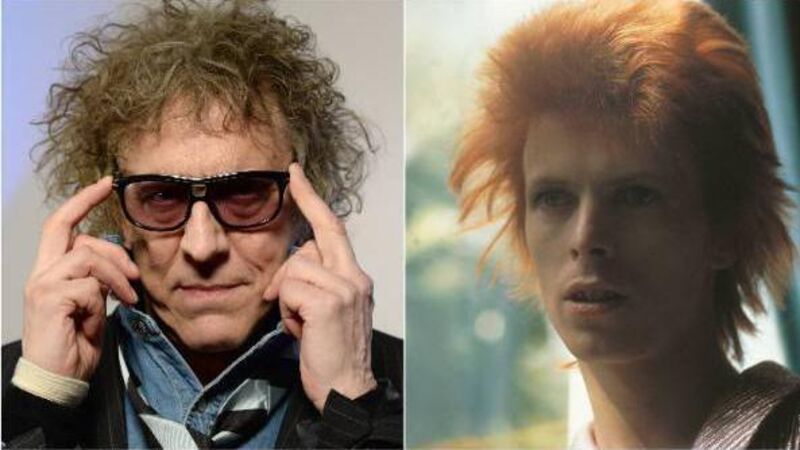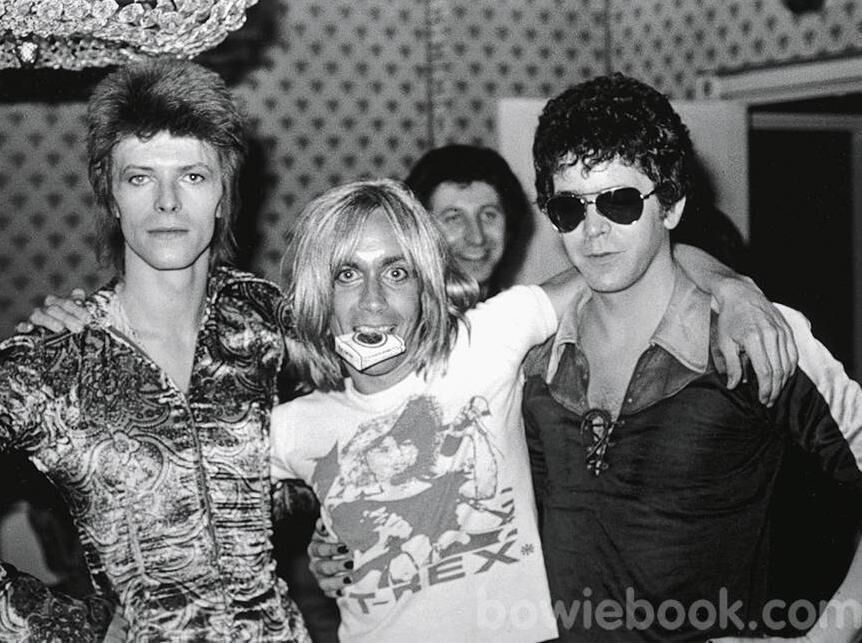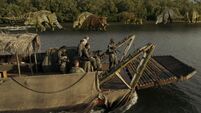Mick Rock on photographing David Bowie in his Ziggy Stardust phase

Mick Rock and one of his photographs of David Bowie, from the updated book Moonage Daydream: The Life and Times of Ziggy Stardust.
Mick Rock, known as ‘The Man Who Shot the Seventies’, played an essential role in framing David Bowie. A key part of the British rockstar’s entourage in the early 1970s, he took hundreds of photographs of Bowie through the years. Among the most striking were Rock’s pictures of the Ziggy Stardust phase, taken over an 18-month period in 1972-73, which were assembled into a book in 2002, entitled .
It also featured words from Bowie, talking about his most famous persona and commenting on Rock’s pictures, which led to describing the publication as “the closest we'll ever get to a straight-up Bowie autobiography”.
Originally released as a limited co-signed edition by Bowie and Rock, unsurprisingly, copies sold out and in recent years have been changing hands for huge sums. A new edition of Moonage Daydream has been released to coincide with the 50-year anniversary of the release of classic album, .
The modern edition may not have the autographs – Bowie died in 2016, and Rock passed in November 2021 – but it does come with a far more affordable €50 price tag.
Rock was a larger-than-life presence, even in a room full of rock stars, and I was lucky enough to encounter him on several occasions through the years. Born in Hammersmith in 1948, he came across as an enchanting blend of Cambridge dandy (having studied there) and London lad.
He had already shot album sleeves for Syd Barrett ( ) and Rory Gallagher ( ) by the time he met Bowie. He would also shoot album covers for Queen during the 1970s and more recently snapped the sleeve for by Miley Cyrus.
“A lot of people think I did the Ziggy cover but that was shot about a week before I showed up,” he told me. “As you can see from the book, David looked pretty wild to an audience in 1972, it became more sophisticated after he came back from Japan with all these clothes by [celebrated designer] Kansai Yamamoto. Also, when he brought in Pierre La Roche to do his make-up for 50 quid but David was pretty good at doing his own make-up.”

Just as Bowie was “getting into his stride”, as Rock suggests, he invited Lou Reed and Iggy Pop over to London. Just days after Bowie had appeared on performing Starman, broadcast on July 6, 1972, the photographer would snap the art-rock triumvirate of Bowie, Iggy and Lou together at London’s Dorchester Hotel.
“I hustled that shot together,” explained Rock. “There was a little hype for David but Lou and Iggy were very much underground characters. Lou hadn’t released yet and you couldn’t give away the first two Stooges albums - they couldn’t get a deal anywhere. They came over that summer to work with David, play some gigs and then finally they got a deal.”
Just days after the Dorchester picture, Rock was once again on hand to capture two of the most iconic album sleeves of the 1970s, and , when taking pictures of Reed on July 14, 1972, and Iggy Pop the following night.
“It was by instinct, intuition and good luck. I would just want to be there and I had access because I was David’s friend. Both are performance pictures but because they are so iconic you don’t think of them as being live photos. For me, they are a pair, taken a day apart at the same location which was a cinema that transformed into a rock n’ roll venue on the weekend.”

Could Bowie have packed more into July 1972? Rock recalled Mott the Hoople releasing the Bowie-penned theme that summed up the era. “I was there the night David wrote , which was kind of the soundtrack to the movement. I remember him playing it to [Hoople bassist Pete] Overend Watts and him being very enthused about it, which stopped Mott from splitting up. Everything happened in a short period, the launch of Ziggy, those two (Iggy and Lou) coming over, the Mott single, a lot was going that summer.”
Bowie would soon have his first crack at America under the guidance of manager Tony Defries. “I was just a pawn in the game,” recalled Rock. “Tony’s mantra was ‘treat David like a star and he will become one’. Others tried and it never worked but of course, Bowie had the talent. By September David was traipsing around with bodyguards outside of New York in the pockets like Detroit, Cleveland and Philadelphia — people didn’t know who the hell he was.” Rock was there to shoot almost every moment, missing only Ziggy’s development in Japan and some long-distance journeys. The 600 pictures in capture Bowie’s star in the ascendancy, and what makes it so compelling is the tangible sense of the illusion morphing into reality.

As Rock points out, it was the American rock critic Lester Bangs who suggested Bowie’s first Ziggy promo was “the very moment the modern idea of a video was born”. Rock produced a notable string of subsequent videos, including , and before the end of 1972, as well as the following summer.
“David would say: ‘We’re going to America next week, we need a promo…three hundred quid; can you pull it? I’d be like, ‘Well, I’ll have a crack'. We’d shoot before soundcheck, there was no playback machine, it was so primitive and didn’t cost much because Bowie didn’t have much.
“I was willing to do whatever in the circumstances and I wasn’t looking for anything. I remember David asking me to put the video for together the night before we were about to travel back to England by boat [in December 1972]. We shot that at the RCA Studio in New York”.
Rock recalls Bowie as a very straightforward person to deal with, despite his “mad period”. “He was essentially a very clear-headed person who knew what he liked and what he wanted, with him there was no humming and hawing.”

Rock has mixed feelings about not hooking up with Bowie in 1976, during that infamous mad period in Berlin. In the thrust of cocaine addiction and submerged in the character of the Thin White Duke, the star would nonetheless reach another creative zenith.
“In the summer of ’76, I had three calls in three or four days,” says Rock. “I had Bowie and Iggy in Berlin and then a call from Lou Reed in New York all wanting me to shoot. Things might have been different had I gone to Berlin; I’m not saying better or worse.
“I was still married and had a house in London but I entered the belly of the beast. New York was like the wild west and Sodom and Gomorrah gone berserk. There was a lot of crime but the chemicals were good and the girls were wild and willing; I was still young enough to thrive on it all.”
- (anniversary edition) by David Bowie with photographs by Mick Rock is published on June 16, priced at €50. Order: www.BowieBook.com


